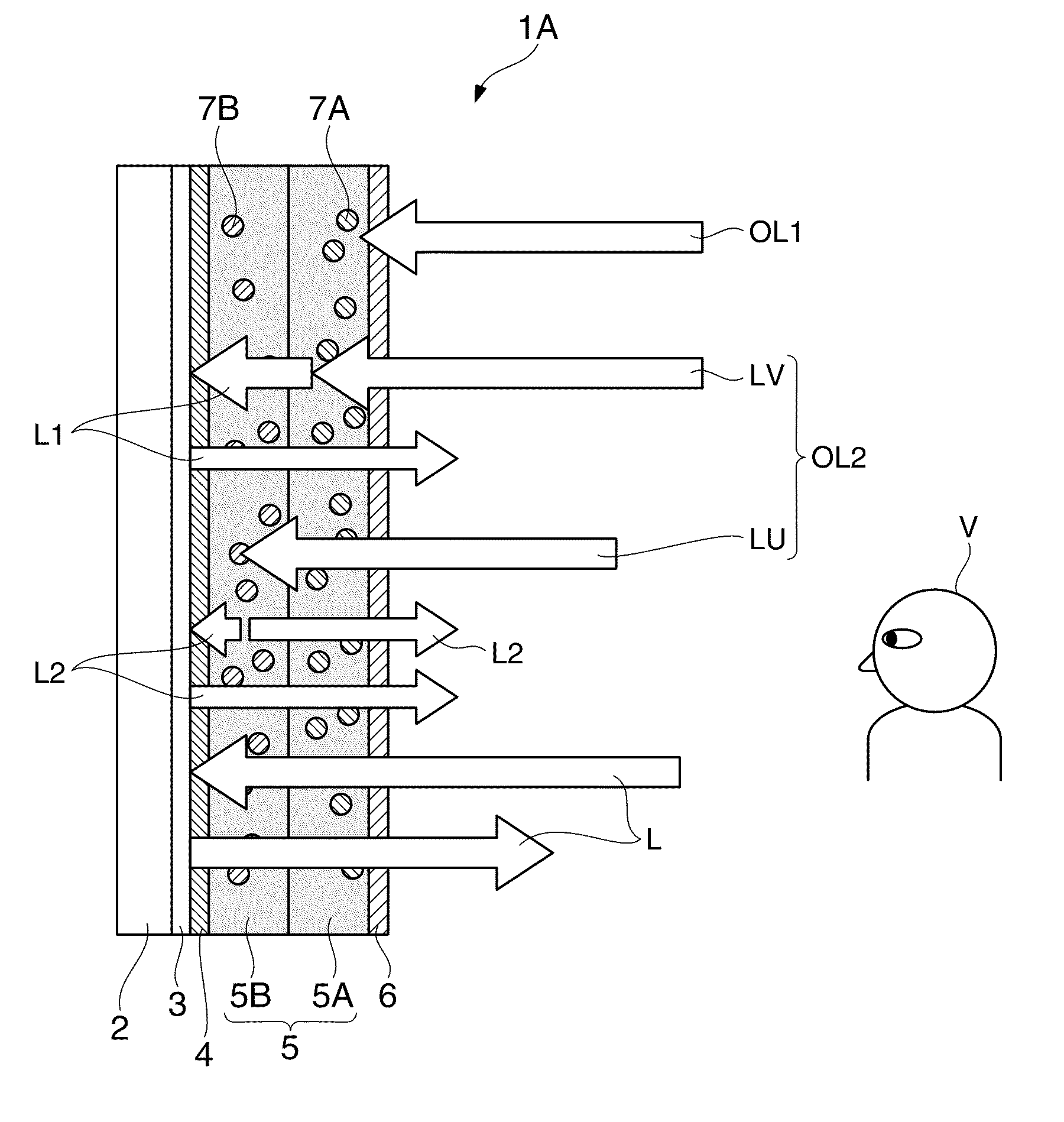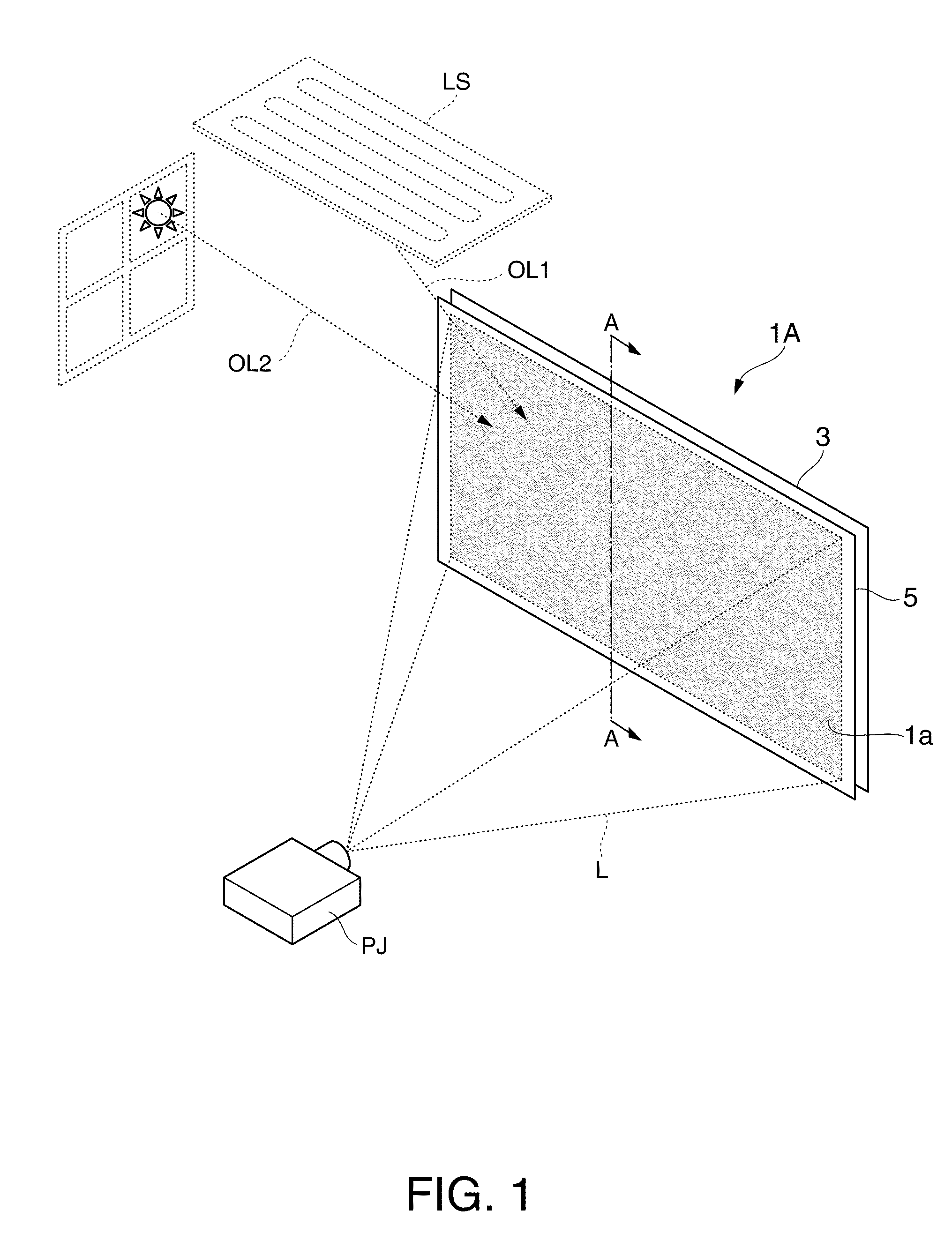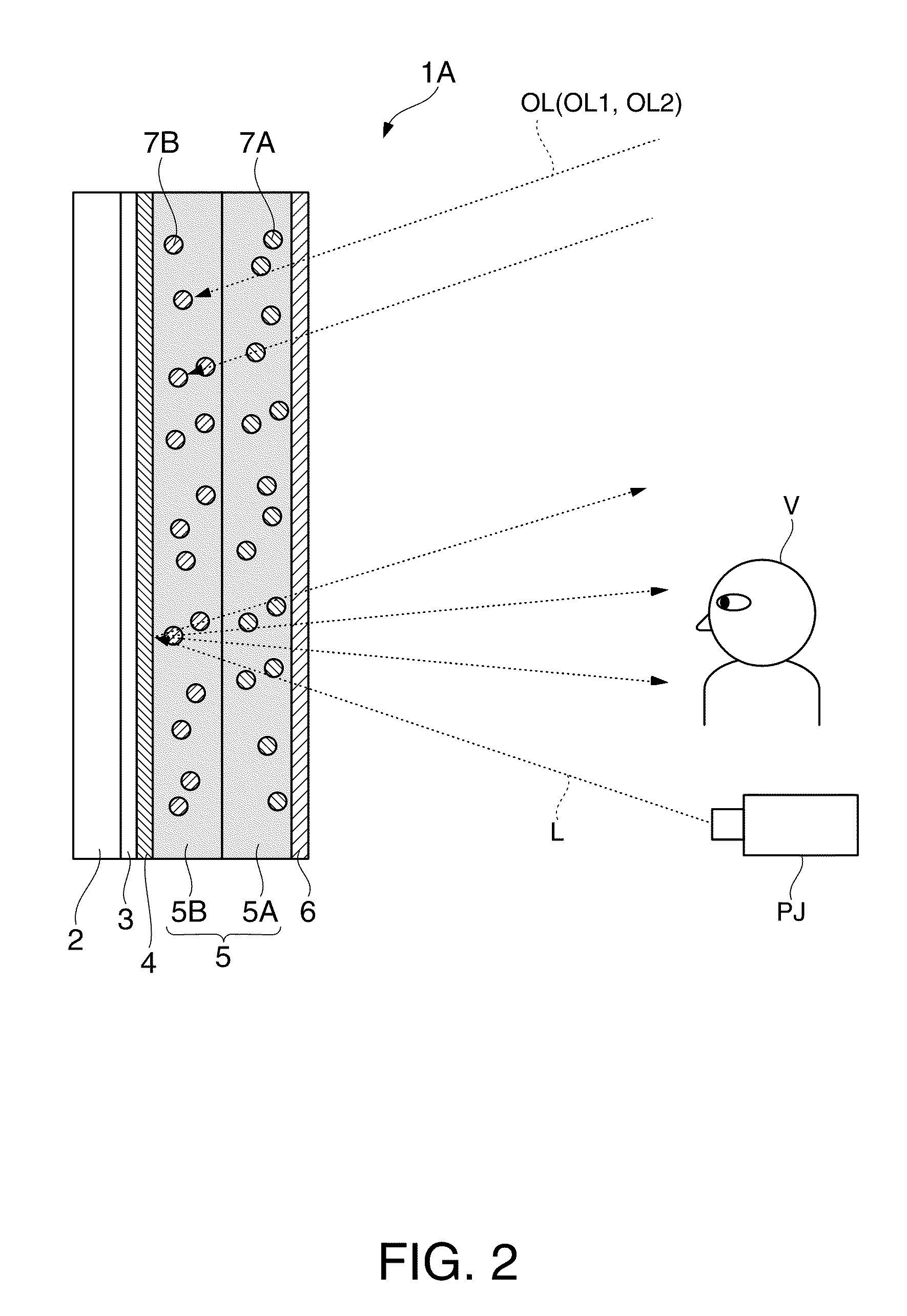Screen and projection system
a projection system and screen technology, applied in the field of screens and projection systems, can solve the problems of deteriorating image quality, difficult to display a clear image, and disrupting the white balance of the projection image, so as to maintain image quality, maintain white balance, and low power
- Summary
- Abstract
- Description
- Claims
- Application Information
AI Technical Summary
Benefits of technology
Problems solved by technology
Method used
Image
Examples
first embodiment
[0038]A screen and a projection system according to First Embodiment of the invention are described below with reference to FIG. 1 to FIG. 4. Note that, for simplicity, the dimensions of the constituting elements in the drawings are not in scale.
[0039]FIG. 1 is a perspective view illustrating a screen 1A and a projection system PS of the present embodiment.
[0040]As illustrated in the figure, the screen 1A of the present embodiment is of a reflection-type, and includes a projection surface 1a; a pigmented layer 5 formed on the projection surface 1a, and that includes pigments that absorb outside light OL1 and OL2; and a reflecting layer 3 provided on the back side of the pigmented layer 5 (opposite from the viewing side). The outside light OL1 is light that originates from a room illumination LS. The outside light OL2 is sunlight.
[0041]The screen 1A has a horizontally long, rectangular planar shape, and reflects back the projected light L from a projector PJ. The projector PJ is a pr...
second embodiment
[0080]FIG. 5 is an explanatory diagram of a screen 1B according to Second Embodiment of the invention. The screen 1B of the present embodiment is partly in common with the screen 1A of the First Embodiment. The difference lies in the properties of the second pigment. Accordingly, the constituting elements common to those described in First Embodiment are given the same reference numerals, and explanations thereof are omitted.
[0081]The explanatory diagram of the screen 1B shown in FIG. 5 corresponds to FIG. 4 of First Embodiment. The second pigment 7C in the second pigmented layer 5B of the screen 1B absorbs the ultraviolet light contained in the outside light OL2 originating from sunlight, and undergoes a change in molecular structure so as to have an absorption band in the visible light region.
[0082]For example, photochromic substances, for example, such as a spiro-oxazine compound can be used as the second pigment 7C. The second pigment 7C is set so that, upon absorbing the ultrav...
PUM
 Login to View More
Login to View More Abstract
Description
Claims
Application Information
 Login to View More
Login to View More - R&D
- Intellectual Property
- Life Sciences
- Materials
- Tech Scout
- Unparalleled Data Quality
- Higher Quality Content
- 60% Fewer Hallucinations
Browse by: Latest US Patents, China's latest patents, Technical Efficacy Thesaurus, Application Domain, Technology Topic, Popular Technical Reports.
© 2025 PatSnap. All rights reserved.Legal|Privacy policy|Modern Slavery Act Transparency Statement|Sitemap|About US| Contact US: help@patsnap.com



